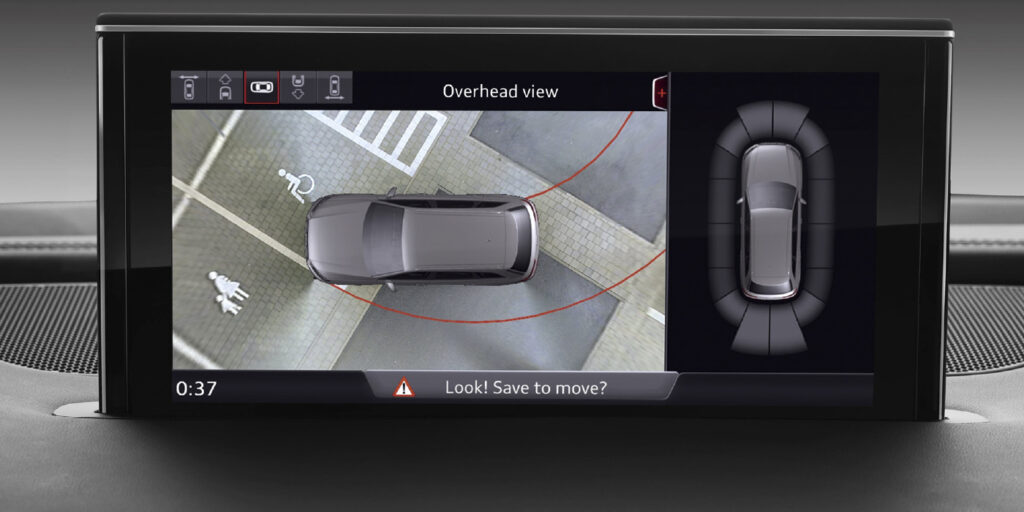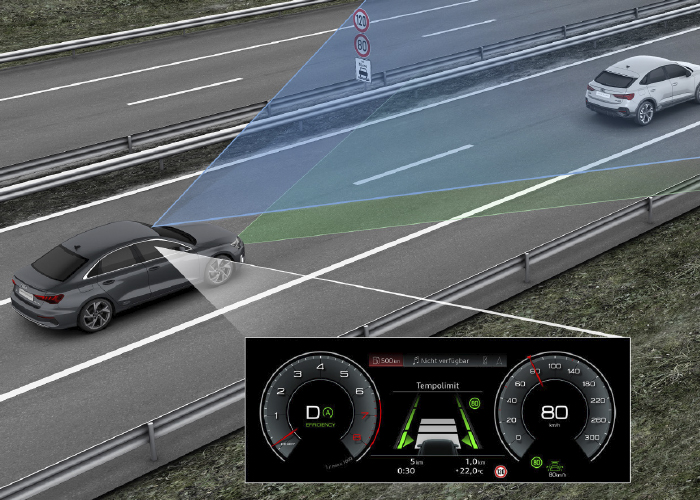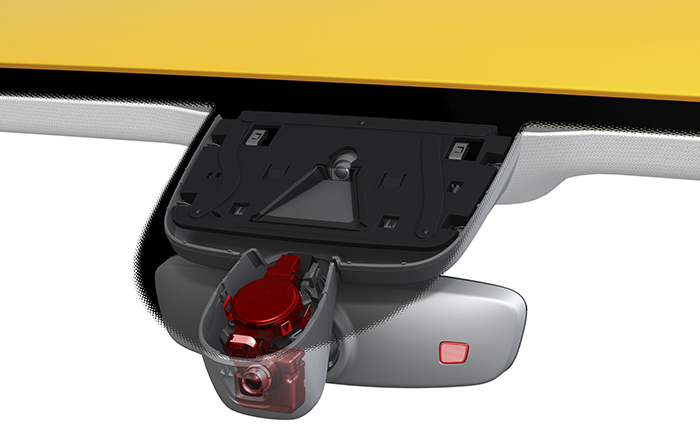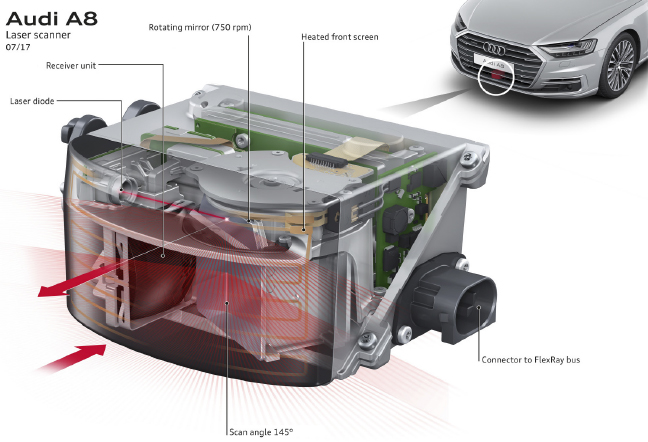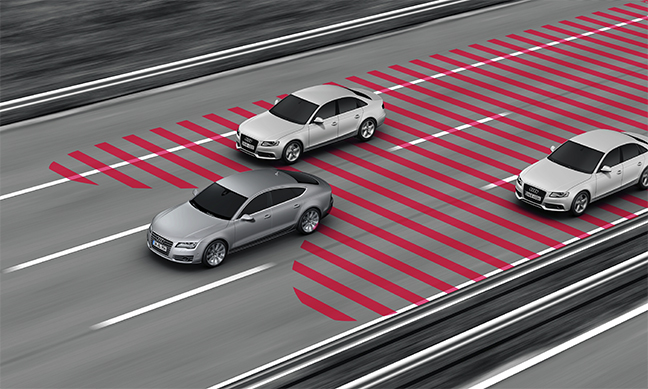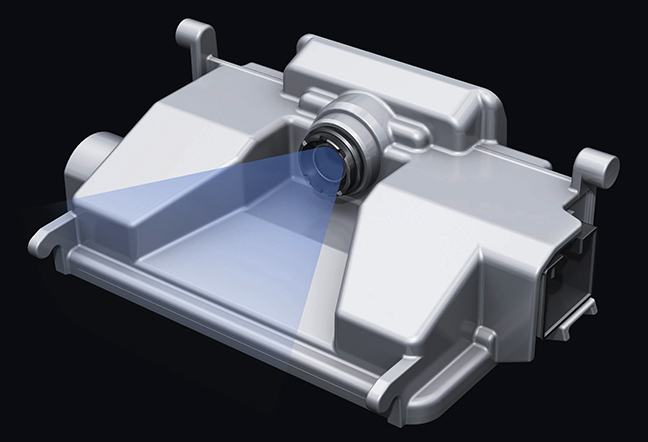Audi was one of the first automakers to adopt Advanced Driver Assistance Systems (ADAS). The overwhelming majority of ADAS sensor calibrations are static on all Audi models and will require a target fixture and scan tool to initiate the procedure.
Not all Audi cars and trucks have the same ADAS features. Depending on the model and options, a vehicle might have only pre-braking, while a similar model might have lane departure, traffic jam pilot and an infrared camera. To save yourself some time, most newer scan tools can detect ADAS options on the vehicle.
Pre-Calibration
Before you even attempt to perform an ADAS calibration on an Audi, you need to prepare the vehicle. Always make sure the vehicle has a full tank of fuel. The next step is to make sure all the tires are the same and properly inflated. If the tires have different rolling diameters, it can change the body’s height and the aim of the ADAS sensors.
An alignment should also be performed to make sure the thrust line is within specifications. As part of the alignment, the steering angle sensor should also be reset. Failing to reset the sensor might cause a steering pull and issues with the electric power steering system.
If the Audi car or SUV you are calibrating has air suspension, the control position must be calibrated. This will set the correct body height for the ADAS calibration. You want to perform this step before the alignment. The procedure is performed with a scan tool and measurement tool.
Calibration
If static ADAS calibrations scare you, take a step back to understand what is going on. Static calibration involves placing a target at a known distance in relation to the vehicle’s sensors. If a camera is being calibrated, the target will have a pattern that matches the factory configuration. For radar sensors, the unit will emit radio waves and bounce it off the target. The accuracy of the calibration depends on the placement of the targets.
Some ADAS calibration systems use the Audi ring emblem on the front and rear of the vehicle to find the centerline. Other systems might use targets on the rear wheel to find the centerline and distance and centering for the target fixture. Some ADAS tools use tape measures, while other systems use lasers. The critical thing to remember is to follow the instructions.
Audi engineers use the center of the front wheels to measure the distance to the targets. Most aftermarket systems use similar methods to measure this distance and other methods to ensure the fixture is square with the vehicle.
In the instructions, you might be asked to verify a measurement. Do not just press the continue button; you will need to confirm the measurement. If the targets are not properly placed, the calibration procedure might not start, or it could be inaccurate and cause false activation of the brakes or steering.
Before you start with the calibration procedure, make sure the cameras are clean. On newer models, you will have cameras in the windshield, c-pillar and the trunk. You might have to remove the grilles in the lower part of the front bumper that cover the long-range radar sensors for some models.
A scan tool is required to activate the calibration mode on Audi vehicles. When the system is in calibration mode, the module is receiving the images from the cameras or distance data from the long-range radar units. For Audi vehicles, you will have to change the target angle as part of the procedure.
For most procedures, you must select the sensors one at a time for calibration. Calibration is required if a component has been replaced or disturbed from its mountings. Also, the forward-facing sensors must be calibrated if either the rear toe or thrust angle was adjusted.
Most cameras will adjust internally and do not require any tools. The front-mounted radar sensor is adjustable with screws on the X and Y axis. After the adjustment and calibration procedures are complete, go for a test drive to verify operation, and to ensure there are no reoccurring codes.
The Future
The 2018 Audi A8 is one of the most advanced ADAS systems on the road. It’s one of the first level 3 autonomous vehicle on the streets. Level 3 vehicles have “environmental detection” capabilities and can make informed decisions for themselves, such as accelerating past a slow-moving vehicle. But, they still require driver intervention under some conditions.
The A8 has one of the first LIDAR systems on the road. It also has a long-range and mid-range radar system. Combined with cameras, the system has built-in redundancy if one sensor is not working.
Making Money
The labor times for a calibration procedure for a late-model Audis range between 1.8 to 2.2 hours. The barriers of entry for ADAS service are coming down every year. With the right tools and training, these are some of the most straightforward Audi jobs you can book.

